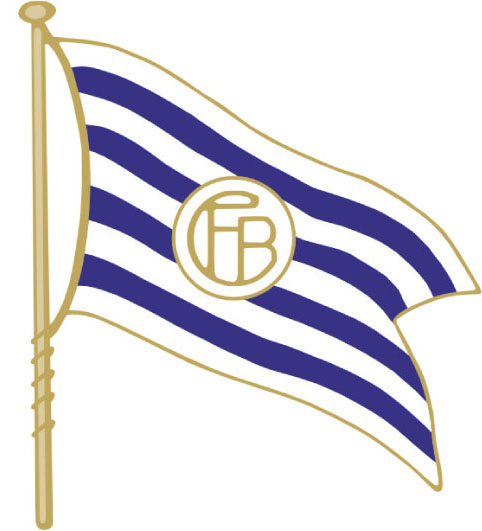
BAYERN MUNICH
PRIDE AND DOMINANCE
Bayern Munich’s Bavarian motto Mia San Mia means ‘We are who we are’, which says a lot about the great German club. With a straight back and chest puffed out, Bayern has long nourished the myth about itself: the self-satisfied South German giant who knows what is best and acts accordingly.
Founded in 1900, the club has always represented the region of Bavaria rather than the city of Munich. The evolution of the crest reflects this: the lozenges are the blue and white of the Bavarian flag and prominent alongside the club colours of red and white. The four stars above the badge represent their 20 Bundesliga titles (they won their 28th in 2018). It is a crest that has become familiar across Europe thanks to their three successive European Cup triumphs from 1974 to 1976, and their two Champions League trophies.
The club actively fosters a sense of ‘us against them’: the Bavarian family against the rest of Germany. Bayern Munich has never been ashamed of being number one and has never been shy of buying the best players of their nearest rivals. Fewer people are aware of Bayern’s more humble history. Before the Second World War, Bayern was a Jewish club, which made it a target for the Nazis. Bayern resisted and in 1934 a number of players were involved in confrontations with the Nazis. In the following years players and officials displayed acts of civil courage that were forgotten during the post-war era, but which have now been incorporated into its proud history.
CLUB: FC Bayern München
NICKNAMES: Der FCB, Die Bayern (the Bavarians), Stern des Südens (the Stars of the South), Die Roten (the Reds) and FC Hollywood
FOUNDED: 1900
STADIUM: Allianz Arena, Munich (75,000 capacity)
HISTORIC PLAYERS: Sepp Maier, Franz Beckenbauer, Gerd Müller, Karl-Heinz Rummenigge, Jürgen Klinsmann and Oliver Kahn

Bayern Munich was founded by members of the sports association MTV München. The club’s first emblem was a blue and white flag – the colours of Bavaria – with their initials in the centre.

At the start of the 1920s, after a number of reorganisations, the club began to use their initials as an emblem. Unfortunately, there is some uncertainty about the exact year for this particular crest. In 1939, Bayern’s legendary chairman Kurt Landauer, a German-Jewish veteran of the First World War, was forced to flee to Switzerland. He returned to the club after the Second World War.

1961–1965, 1965–1970 and 1970–1979. The early ’60s saw the design of the crest that came to be synonymous with Bayern Munich. Initially it was oval with the whole name written out, but the most important change was the blue and white geometric pattern in the centre. This was taken from the area’s flag and crest, forming part of an emblem that would gradually change with the club’s successes during the ’70s.

2002–2017. In the year the club secured the historic double (Bundesliga and Champions League), the emblem was modified again. The club crest is the result of a number of new departures, and this emblem was the first since 1970 not to include E.V. in the design. E.V. stands for Eingetragener Verein, which translates as ‘registered association’.

2017–present. In the summer of 2017, the world saw evidence of the meticulous German attitude to design and form, because that is when Bayern Munich changed the details of their crest. In an attempt to make it clearer, the font was renewed, the red colour became warmer, the blue darker, and the white Bavarian pattern now reached all the way to the edge of the circle.

Jürgen Klinsmann finished club top scorer in the two seasons he played for Der FCB. His goals secured the UEFA Cup (1996) and yet another Bundesliga title for the Bavarians.